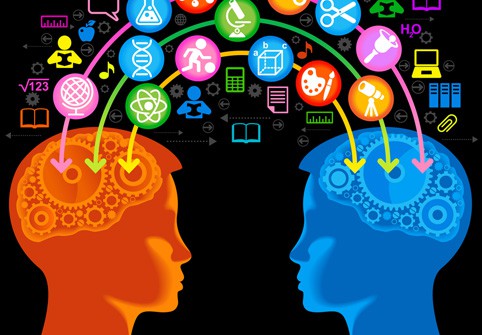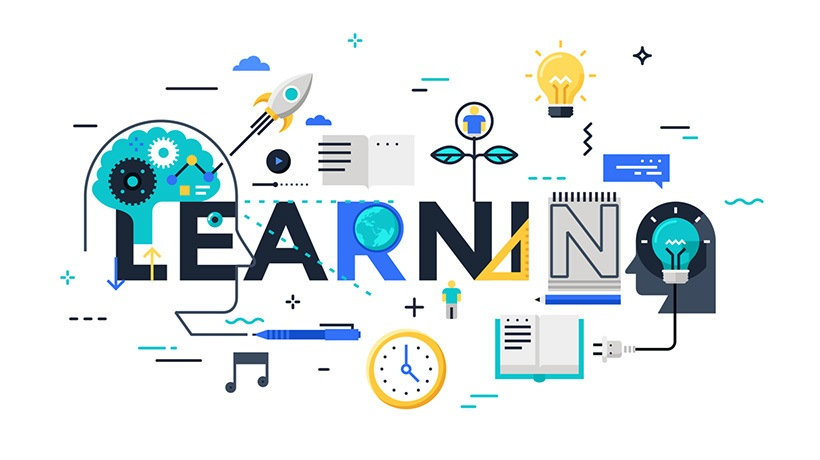Table of Contents
ToggleTeaching – Learning Process
Teaching – Learning Process Learning Outcomes.
- Education – is a process through which an individual attains knowledge, skills, attitudes and other abilities required for leading a productive life in the society
- Teaching: deliberate intervention that involves planning and implementation of instructional activities in order to bring about desired behavioral changes in students.
- Learning – is the process of acquiring new knowledge skills and attitudes which enable students to do something that they could not do before OR this is a change in an individual’s behavior as a result of receiving instructions.
Teaching-learning process
- Learning is brought about through teaching. Teaching process is the arrangement of the environment within which the students can interact and study how to learn.
Elements/components of teaching-learning process
- Learner– someone who is going to attain knowledge and skills in order to change behavior
- Teacher– someone who selects and organizes teaching-learning process
- Learning objectives– intended learning outcomes which can be observed or measured.
- Sequence of stimulus-response stimulation (teaching) -here the teacher starts to direct learning in order to ensure enhancement of student’s cognitive (knowledge), psychomotor (skills) and affective (attitude ) abilities.
- Reinforcement of the behavior-there should be an activity which increases the likelihood that some event will occur again. It can involve continuous practice of what has been taught.
- Monitoring, assessment and evaluation-it involves finding out whether the set objectives were achieved.

TEACHING PROCESS
Qualities of a good teacher
- Enthusiastic with content to be taught.
- Organized
- Good communicator
- Active listener
- Empathy
- Time manager
- Confident
- Respectful
- Counsellor
- Honesty/ trustworthy
- Knowledgeable
- Good teaching ethics
- Good leader- lead and guide learners
- Team work
- Creative /innovative
The Teaching and Learning Process refers to phases of teaching i.e. steps taken to achieve effective teaching and learning. Sometimes it is referred to as The Instruction Process.
They include:
- Planning for teaching:
- Mind about the nature or level of the learners- whom am I going to teach?
- Prepare teaching objectives-what am I going to teach? ∙ Prepare the teaching method(s)-what appropriate strategy or strategies am I going to use in teaching?
- Prepare the teacher’s and learners’ tasks-what will I do to involve my learners in their learning?
- Prepare teaching aids/materials-what do I need to teach/what tools or equipment will I use in teaching?
- Prepare the assessment and evaluation methods-how will I know that my learners have achieved the level of ability or competence I want?
- Research and review the content meant for teaching-am I confident of what I am going to teach?
Remember: failing to prepare for teaching you are preparing to fail teaching
2. Implementation of teaching (active phase):
- Creating rapport
- Introducing teaching/learning objectives
- Assessing learners’ prior knowledge
- Giving content and major ideas of the session,
- Implementing the teaching methods.
- Assessment and Evaluation of teaching:
Measure the level of acquired skills, attitudes or knowledge (determine the level of achievement of the objectives of teaching and learning) by:
- ∙ Ask one of the learners to summarize
- ∙ Ask important questions about what has been taught
- ∙ Administer the assessment tool/test
- ∙ Score/mark the learners
- ∙ Giving feedback about performance of the learners
- ∙ Determine or decide the direction to take basing on their performance
THE SIX MAJOR TASKS OF A TEACHER
- Planning
- Decide what students should learn (prepare objectives / tasks)
- Put the contents in a suitable sequence
- Allocate amount of time and different learning activities.
- Select learning activities and teaching methods
- Choose assessment procedures
- Identify resources needed
- Inform the student about the plan
- Tell, explain, advise
- Help students to exchange ideas. Students can still learn in your absence
- Provide students’ thinking
- Use varied teaching techniques, Be creative
- Detect whether students understand.
- Prepare, select or adapt educational materials e.g. handouts, exercises, reference books etc.
- Arrange learning experiences, especially opportunities to practice skills (visit the wards, Field visit, attachments to clinical areas & projects etc.)
- Arrange aceess to materials (Such as patients, learning models, libraries, audio visual programs etc)
- Show students that you care.
- Listen and attempt to understand
- Help students to identify their options and to make their decisions
- Provide advice and information that helps students.
- Design an assessment that measures how much students have learnt
- Use the assessment to guide students learning
- Use the assessment to give feedback that modifies teaching.
- Use the assessment to decide whether students are competent to provide health care.
- Encourage students to use self -assessment and peer-assessment.
- Know the subject matter that is taught and where to find relevant information
- Know the way in which health care is provided locally.
- Set an example as a continuous learner.

LEARNING PROCESS
Types of learning
Learning involves either physical or mental activities. There are different types of learning which could be classified as:
- Depending on the way of acquiring knowledge
- Formal learning– it occurs in organized or structured form like school or workplace
- Informal learning-this is learning that occurs away from structured, formal environment. It happens through self-directed learning or experience like observing,
- Non-formal learning– it includes various structured learning situation which do not have a curriculum or syllabus e.g swimming, driving, scouting sessions
- Individual learning- involves self directed training and instructions
- Group learning– co-operative learning involving groups of people
Roles of a learner
- Attending classes on time
- Completing all assignments
- Active participation in class and all school activities
- Revision or reading on regular basis
- Respecting teachers and colleagues
- Plan their time
- Give feedback to teachers
- Maintain discipline in the class
- Maintain environment clean and keep school property in good condition
- Abide to school rules and regulation
Phases of Learning
- Motivation phase– the learner must be motivated to learn by expectation that learning will be rewarding. Each learner has their motives and needs in life to achieve.
- Apprehending phase– learner stands or pay attention if learning has to take place. It involves understanding or perceiving what is taught.
- Acquisition phase – while learner is paying attention, there is attainment of new information or behaviour.
- Retention phase– newly acquired information must be transferred from short term to long term memory.
- Recall phase – recall previously learned information; to learn to gain access to what has been learned is a critical phase in learning.
- Generalization phase – transfer of information to new situations allows application of the learned information in the context in which it was learned.
- Feedback phase – students must receive feedback on their performance after assessment.
WAYS TEACHERS CAN USE TO HELP STUDENT LEARN (ROLES)
- Individualize: Allow for individual differences and abilities.
- Accept all students as they are, and then start to do a good work in them.
- Consider students as individuals, engaged each in learning on their own.
- Vary your teaching.
- Try to make sure that each student gets what he / she needs.
- Students learn by doing these activities.
- Tell students how well they are doing things,
- What was done poorly and how they could have done better in order to correct their mistakes.
4. Also encourage students to provide their own feedback
- Like, how best they need to learn, check their own work for mistakes etc.
- Help students to make sense of what they are learning by showing how it is relevant to them
- Provide plenty of practice and repetition of what they learn
- Don’t let your students struggle to figure out what is expected of them.
- Reassure students that they can do well in your course, and tell them exactly what they must do to succeed
- An instructor’s enthusiasım is a crucial factor in student motivation. If you become bored or apathetic, students will too.
- From easy to difficult
- From what they know to what they don’t know
- – Use illustrations
- Variety reawakens students’ involvement in the course and their motivation.
- Break the routine by incorporating a variety of teaching activities and methods in your course: ward teaching, role playing, debates, brainstorming, discussion, demonstrations, case studies, audiovisual presentations, or small group work.
- If you base your tests on memorizing details, students will focus on memorizing facts.
- If your tests stress the synthesis and evaluation of information, students will be motivated to practice those skills when they study.
- The threat of low grades may prompt some students to work hard, but other students may resort to academic dishonesty, excuses for late work, and other counterproductive behavior.
- Make your teaching interesting, lively, relevant and rewarding.
1. Relevance and Meaningful Learning: When students can see the relevance of what they are learning to their lives, interests, and future goals, they are more likely to be motivated to engage with the subject matter.
2. Autonomy and Choice: Allowing students to have some control over their learning, such as selecting projects or topics of interest, can enhance their motivation and sense of ownership in the learning process.
3. Clear Goals and Expectations: Setting clear and achievable learning goals helps students understand what is expected of them and provides a sense of direction, which can increase their motivation to accomplish those objectives.
4. Positive Learning Environment: A supportive and positive classroom or learning environment, where students feel respected, valued, and safe, can foster motivation and a willingness to participate actively.
5. Recognition and Rewards: Acknowledging and rewarding students’ efforts and achievements, both individually and collectively, can boost their confidence and motivation to excel in their studies.
6. Teacher Enthusiasm and Engagement: Teachers who show genuine enthusiasm for their subjects and actively engage students in the learning process can inspire excitement and curiosity, motivating students to learn.
7. Peer Interaction and Collaboration: Collaborative learning experiences and positive interactions with peers can create a sense of community and motivation to learn from and with others.
8. Intrinsic Curiosity and Interest: Cultivating curiosity and encouraging students to explore topics that fascinate them can lead to a natural desire to learn and discover more.
9 Feedback and Progress: Providing constructive and timely feedback on students’ work helps them understand their strengths and areas for improvement, contributing to their motivation to progress and grow.
10 Challenging Yet Attainable Tasks: Striking the right balance between challenging students with meaningful tasks and ensuring those tasks are achievable can foster a sense of accomplishment and motivation to take on new challenges.


Very educative!
Thanks so much
Nice lecture
Thanks,
they are easy to read and understand
Thanks 😊